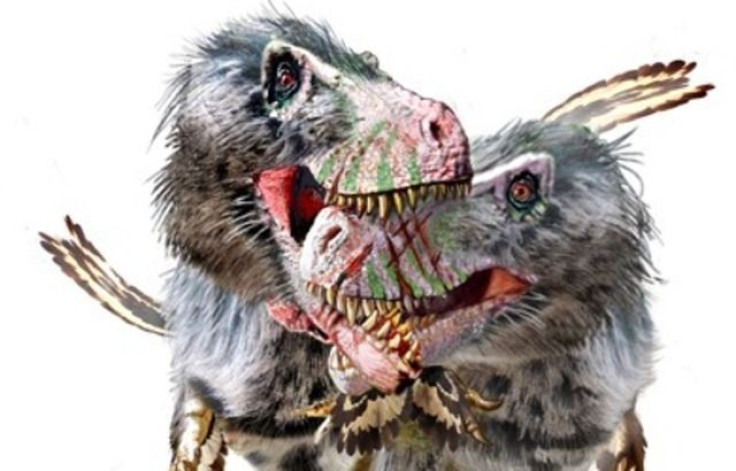Were Dinosaurs Cannibals? Fossil Of 74-Million-Year-Old Daspletosaurus Shows Evidence Of Intraspecies Combat

Scientists have found evidence of cannibalism in a particularly large and aggressive dinosaur species that once inhabited North America, giving credence to the theory that at least some prehistoric beasts had a taste for their own kind. After closely analyzing the fossilized skull of a Daspletosaurus discovered in Canada in 1994, researchers found that the dinosaur had suffered injuries not just during combat with other dinosaurs but also postmortem, indicating that it became someone else’s dinner in death, according to a study published Thursday in the journal PeerJ.
“This animal clearly had a tough life suffering numerous injuries across the head, including some that must have been quite nasty,” David Hone, a lecturer in ecology at Queen Mary University of London, which led the study, said in a statement. Large, circular puncture marks in its skull indicated that a very large predator had taken a bite out of the Daspletosaurus. “The most likely candidate to have done this is another member of the same species, suggesting some serious fights between these animals during their lives,” said Hone.
Daspletosaurus was a species of tyrannosaurid -- a family of massive, carnivorous dinosaurs that includes the eponymous Tyrannosaurus rex -- that inhabited western North America between 77 million and 74 million years ago. Its name means “frightful lizard,” and for good reason. Adults reached lengths of 26 to 30 feet from snout to tail and weighed between 1.8 and 3.8 tons.
Daspletosaurus was at the top of the food chain in its day and preyed upon larger dinosaurs. It had a short, S-shaped neck and an enormous head and rows of large, sharp teeth. It had the characteristic tiny forelimbs of its infamous T-rex cousin and walked upright.
Researchers said that while it’s not unusual to find evidence of cannibalism in dinosaur species, it certainly is uncommon. “This case is very rare because these are big carnivores, so there’s going to be one every few dozen kilometers, and they’re not going to encounter each other on a daily basis,” Hone told IBTimes UK. Researchers said that the thought of the species actually going about hunting each other isn’t that far-fetched.
© Copyright IBTimes 2024. All rights reserved.












